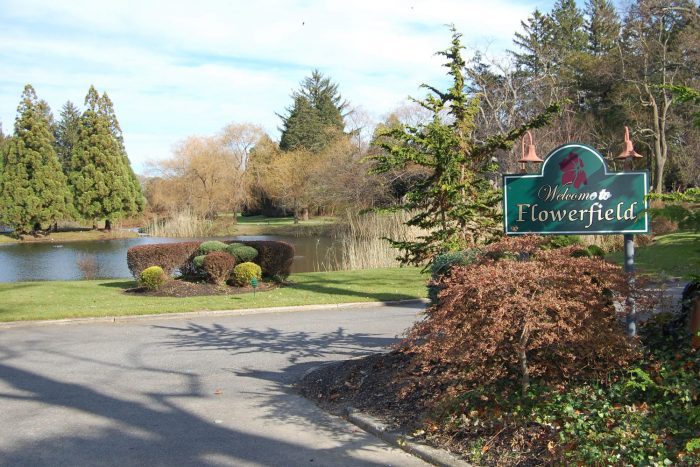New York State steps in to preserve Flowerfield Fairgrounds in St. James
By Samantha Rutt
The New York State Department of Environmental Conservation recently advised the Town of Smithtown of its consideration to acquire Flowerfield Fairgrounds, a St. James community staple. Town Supervisor Edward Wehrheim (R) has stated no objection to NYSDEC acquiring the property.
Community residents strongly feel the importance of protecting this rural area from overdevelopment. The potential state acquisition signifies a breakthrough in the longstanding controversy over a proposal for sprawling commercial development on-site.
“This is a huge step forward in the fight to preserve Flowerfield Fairgrounds for future generations,” Judith Ogden, a Village of Head of the Harbor trustee and spokesperson for the Saint James-Head of the Harbor Neighborhood Preservation Coalition, said in a statement.
NYSDEC proposed using the Environmental Protection Fund to obtain the property.
“New York State is committed to the conservation and protection of the state’s natural resources and recognizes the significant conservation values of the Gyrodyne property,” a NYSDEC official said. “The Environmental Protection Fund is one of the sources used to acquire lands identified as conservation priorities in the New York State Open Space Plan.”
The Flowerfield property would then be used for open space preservation and conservation, potentially including active-use recreation amenities such as biking and walking trails.
“I am certainly happy about this development,” said Joe Bollhofer, also a member of the coalition. “We’ve been working on this for almost three years now.”
If not acquired by NYSDEC, the property has been proposed to facilitate a multistory, 125-room hotel, 175,000 square feet of office space, 250 assisted living housing units, a 7-acre sewage treatment plant and parking for more than 2,000 vehicles.
The development plan was initially proposed by St. James-based Gyrodyne, a real estate investment trust firm that owns, leases and manages commercial properties along the Eastern Seaboard.
The state’s interest in preserving the land comes from discussions between NYSDEC, Suffolk County Executive Steve Bellone (D), former New York State Assemblyman Steve Englebright (D-Setauket) and the Peconic Land Trust.
“The state has a tremendous interest in what happens to Stony Brook Harbor,” Englebright said. “The state owns 90% of the bottom” of Stony Brook Harbor.
“The water chemistry of the harbor is pristine right now, or nearly, so it will not be if they build what they have proposed for the Flowerfield property,” Englebright added. “It’s really a matter of protecting the state’s interest and the community’s interest.”
Interactions between the state and town regarding state efforts to preserve the open space portion of the site occurred several months after the Town of Smithtown rejected a controversial proposal to develop a congregate-care facility on nearby Bull Run Farm, citing the desire to protect the area’s rural character.
“Part of comprehensive planning in a community is thinking about how you’re going to develop space so that it works and you protect the integrity of the community,” Ogden said. “So if we look at that area, we don’t need to add more traffic volumes.”
The agreement between the state and town comes as the legal challenge brought upon by the Village of Head of the Harbor and nearby property owners opposing preliminary approval of the controversial plan remains tied up in the state Supreme Court. “Unfortunately, there are other issues involved here — environmental, et cetera,” Bollhofer noted.
Local residents have contributed generously to fund the coalition’s lawsuit to block Gyrodyne’s development plans from moving forward. In a press release in April 2021, Gyrodyne announced that it planned to sell the property and would consider offers for portions of the property or the entire site.
“There’s a lot of water under the bridge here,” Bollhofer said. “And we’re finally having some kind of movement from the state,” adding, “We don’t know if there’ll be other organizations that are going to be involved in helping to manage the property if it is purchased. But there are 48 acres, there’s still open space. … That’s really what we’re concentrating on right now.”
According to a recent statement by a NYSDEC representative, “The DEC has been involved in preliminary discussions with stakeholders regarding the property’s future conservation.”







